Rare Early Tract Map Showing the South End of Holmby Hills
Rare Janss Investment Company Tract map, showing the original subdivision of Holmby Hills, circa 1923.
Includes pencil notes showing the selling price for two lots on Club View Drive ($91,500 and $60,000) and who are likely prices for 3 other lots (52 1/2, 48 1/2 and 48 1/2).
The areas shown as "Park" is now Holmby Park and the Armand Hammer Golf Course. "The Manor" (Aaron Spelling Estate) at the corner of Mapleton and Club View, is the lot note above which sold for $91,500. The Manor has most recently been marketed for $150,000,000 and was sold in the late 1990s for $94,000,000. Not mapped, but shown at the top of the map at the corner of Wyton and Mapleton, would be the location of the Playboy Mansion.
Holmby Hills
The first European on the land that present-day Holmby Hills, Bel Air, Westwood, and UCLA now occupy was the Spanish soldier Maximo Alanis, who was the grantee of the 4,438-acre Rancho San Jose de Buenos Ayres from a Mexican land grant issued by Alta California Governor Manuel Micheltorena in 1843.
In 1858, he sold it to Benjamin Davis Wilson, of early Pasadena development, the second Mayor of Los Angeles, and namesake for Mount Wilson in the San Gabriel Mountains. In 1884, Wilson sold Rancho San Jose de Buenos Ayres, at 2,000 acres to the nephew of leading pioneer William Wolfskill, businessman John W. Wolfskill, son of Mathus (Mathius) Wolfskill, William's younger brother. He paid $10 an acre and built a ranch house, near the present-day Mormon Los Angeles Temple.
The development of Holmby Hills began when Arthur Letts, Sr., purchased 400 acres of the original Wolfskill ranch at $100 an acre. He called the development "Holmby Hills," which was loosely derived from the name of his birthplace, a small hamlet in England called Holdenby. Letts died suddenly in 1923 before he could realize his vision. His son-in-law, Harold Janss, took over the project.
Zoning for the community was designed to accommodate lot sizes up to 4 acres. The streets were named after places in Great Britain. In the 1920s, English-style street lamps were added specifically for the neighborhood. In the era after the Wall Street Crash of 1929, grand mansions were constructed.
Rarity
The map is very rare. We were unable to locate another example in an institutional or private collection.









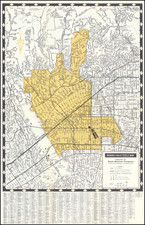
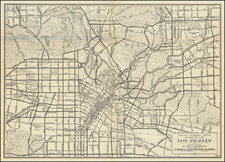
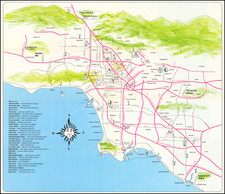
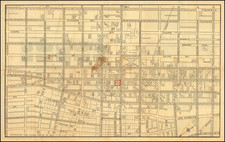
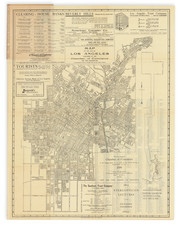
![[Hollywood / Los Angeles] Castle's Inc. Hollywood's Complete Camera Store](https://storage.googleapis.com/raremaps/img/small/73017.jpg)